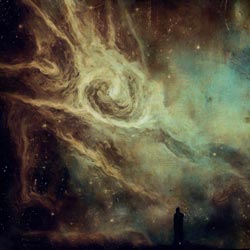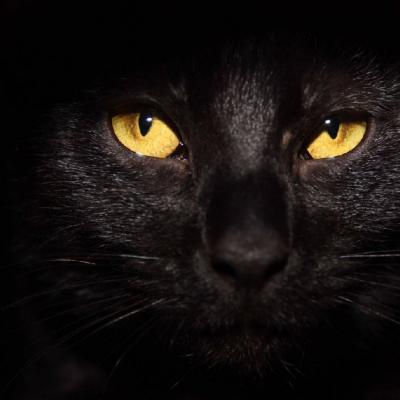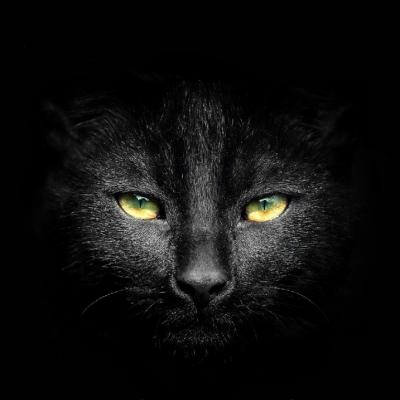 Within the expansive realm of cosmic horror, the collaboration between Howard Phillips Lovecraft and R.H. Barlow births 'Collapsing Cosmoses,' a narrative that delves into the abyss of the unknown. This chilling tale peers through the veil that separates reality from the unimaginable, leaving readers pondering existence itself. As lightning cracks and storm clouds loom, the story weaves a tapestry of dread and awe, a testament to the cosmic terrors that lie beyond our understanding.
Within the expansive realm of cosmic horror, the collaboration between Howard Phillips Lovecraft and R.H. Barlow births 'Collapsing Cosmoses,' a narrative that delves into the abyss of the unknown. This chilling tale peers through the veil that separates reality from the unimaginable, leaving readers pondering existence itself. As lightning cracks and storm clouds loom, the story weaves a tapestry of dread and awe, a testament to the cosmic terrors that lie beyond our understanding.
In the pantheon of tales that dance on the edge of the unknowable abyss, "Collapsing Cosmoses", penned by Howard Phillips Lovecraft and R.H. Barlow, stands as a testament to cosmic horror. This chilling narrative peers beyond the thin veil separating the familiar from the unfathomable, compelling readers to question the nature of existence itself. Under a stormy, foreboding sky, the tale weaves its intricate patterns, each thread a pulse of dread and awe, forming a tapestry of horror and fascination.
Born of an alliance of two writers whose minds teemed with eldritch visions, "Collapsing Cosmoses" swells with an atmosphere of sublime dread. Its thematic resonance is not only emblematic of Lovecraftian canon but also acts as a mirror held up to the human condition. A cosmic void where life's ephemeral nature is harshly contrasted with the eternal pulsation of uncaring celestial bodies. It is not fear of the known but of the profound unknown that gnaws at the marrow of the reader's consciousness.
Yet, the narrative isn't without its dissonances. Criticism rears its Hydra-head in the form of perceived stylistic infidelity, a critique suggesting an imbalance in Lovecraft and Barlow's respective contributions. Some argue the absence of Lovecraft's signature lexical intricacies and labyrinthine prose lends the piece an unfamiliar tone, one slightly adrift from the moorings of his established style.
However, any perceived dilution of Lovecraft's distinctive touch is countered by the story's dedication to his overarching thematic oeuvre. This is no rogue planet, but a satellite in faithful orbit around the dark sun of Lovecraft's cosmology. It reaffirms the insignificance of humanity in the grand cosmic theatre, a recurring motif in Lovecraft's broader body of work.
"Collapsing Cosmoses" nestles comfortably within Lovecraft's mythos, echoing the distinctive note of cosmic horror that pervades his universe. The terror within its pages is not born of physical horrors, but of the collapse of the mental structures we erect to navigate reality. This existential dread aligns it with other Lovecraftian tales where humanity's sense of self is obliterated before the indifferent gaze of the cosmos.
Nevertheless, the story strays slightly from Lovecraft's traditional narratives. Its culmination is not buried in cryptic allusions or the narrative ambiguity Lovecraft often employs. Instead, the climax unveils the cosmic terror in a straightforward revelation, offering the reader a glimpse of the inscrutable abyss in stark, horrifying clarity.
The tale of "Collapsing Cosmoses", a testament to cosmic insignificance and existential dread, marks a significant node in Lovecraft's illustrious oeuvre. While straying slightly in stylistic execution, the tale remains tethered to Lovecraft's core themes, making it an intriguing artifact worthy of exploration for any Lovecraft aficionado or scholar of cosmic horror.
In conclusion, the tale stands as an intriguing coalescence of Lovecraft's and Barlow's visions. While it deviates from some of the stylistic conventions associated with Lovecraft, it stays faithful to his thematic obsessions, thereby adding a unique but recognizable piece to the puzzle that is Lovecraft's universe.
References:
- Burleson, D. R. (2001). Lovecraft: Disturbing the universe. University Press of Kentucky.
- Campbell, R. W. (2015). A Companion to American Gothic. John Wiley & Sons.
- Cannon, Peter (1996). H.P. Lovecraft. Twayne's United States Authors Series. Twayne Publishers.
- De Camp, L. Sprague (1975). Lovecraft: A Biography. Doubleday.
- Derleth, August (1971). Lovecraft: A Study in the Fantastic. Borgo Pr.
- Dziemianowicz, Stefan (1998). H.P. Lovecraft's Criticism of Poe: A Study. Publisher not identified.
- Joshi, S. T. (2001). A dreamer and a visionary: H.P. Lovecraft in his time. Liverpool University Press.
- Klein, T. E. D. (1999). Lovecraft's "Artificial Mythology". In An Epicure in the Terrible: A Centennial Anthology of Essays in Honor of H.P. Lovecraft. Fairleigh Dickinson University Press.
- Price, Robert M. (1995). H.P. Lovecraft and the Cthulhu Mythos. Cryptic Publications.
- Schultz, David E. (2007). An Epicure in the Terrible: A Centennial Anthology of Essays in Honor of H.P. Lovecraft. Hippocampus Press.
- Simmons, D. (2011). New critical essays on H.P. Lovecraft. Palgrave Macmillan.
- Skal, David J. (2001). V is for Vampire: The A-Z Guide to Everything Undead. Plume.
- Wymer, N. C. (2009). Lovecraft's Library: A Catalogue (Revised and Enlarged). Hippocampus Press.
Note: The works of H.P. Lovecraft are in the public domain.
Collapsing Cosmoses
By H. P. Lovecraft and R. H. Barlow
[Note: Barlow’s contributions are in brackets.]
Dam Bor glued each of his six eyes to the lenses of the cosmoscope. His nasal tentacles were orange with fear, and his antennae buzzed hoarsely as he dictated his report to the operator behind him. “It has come!” he cried. “That blur in the ether can be nothing less than a fleet from outside the space-time continuum we know. Nothing like this has ever appeared before. It must be an enemy. Give the alarm to the Inter-Cosmic Chamber of Commerce. There’s no time to lose—at this rate they’ll be upon us in less than six centuries. Hak Ni must have a chance to get the fleet in action at once.”
[I glanced up from the Windy City Grab-Bag, which had beguiled my inactive peace-time days in the Super-Galactic Patrol. The handsome young vegetable, with whom I shared my bowl of caterpillar custard since earliest infancy, and with whom I had been thrown out of every joint in the intra-dimensional city of Kastor-Ya,] had really a worried look upon his lavender face. After he had given the alarm we jumped on our ether-bikes and hastened across to the outer planet on which the Chamber held its sessions.
[Within the Great Council Chamber, which measured twenty-eight square feet (with quite a high ceiling), were gathered delegates from all the thirty-seven galaxies of our immediate universe. Oll Stof, President of the Chamber and representative of the Milliner’s Soviet, raised his eyeless snout with dignity] and prepared to address the assembled multitude. He was a highly developed protozoan organism from Nov-Kas, and spoke by emitting alternate waves of heat and cold.
[“Gentlemen,” he radiated, “a terrible peril has come upon us which I feel I must bring to your attention.”
Everybody applauded riotously, as a wave of excitement rippled through the variegated audience; those who were handless slithering their tentacles together.
He continued: “Hak Ni, crawl upon the dais!”
There was a thunderous silence, during which a faint prompting was heard] from the dizzy summit of the platform. [Hak Ni, the yellow-furred and valorous commander of our ranks through numerous installments, ascended to the towering peak inches above the floor.
“My friends—” he began, with an eloquent scraping of his posterior limbs, “these treasured walls and pillars shall not mourn on my account....” At this point, one of his numerous relatives cheered. “Well do I remember when...”
Oll Stof interrupted him.] “You have anticipated my thoughts and orders. Go forth and win for dear old Inter-Cosmic.”
[Two paragraphs later found us soaring out past innumerable stars toward where a faint blur half a million light-years long marked the presence of the hated enemy, whom we had not seen. What monsters of malformed grotesqueness seethed out there among the moons of infinity, we really didn’t know, but there was a malign menace in the glow that steadily increased until it spanned the entire heavens. Very soon we made out separate objects in the blur. Before all my horror-stricken vision-areas there spread an endless array of scissors-shaped space-ships of totally unfamiliar form.
Then from the direction of the enemy there came a terrifying sound, which I soon recognised as a hail and a challenge. An answering thrill crept through me as I met with uplifted antennae this threat of battle with a monstrous intrusion upon our fair system from unknown outside abysses.]
At the sound, [which was something like that of a rusty sewing-machine, only more horrible,] Hak Ni too raised his snout in defiance, radiating a masterful order to the captains of the fleet. Instantly the huge space-ships swung into battle formation, with only a hundred or two of them many light-years out of line.






